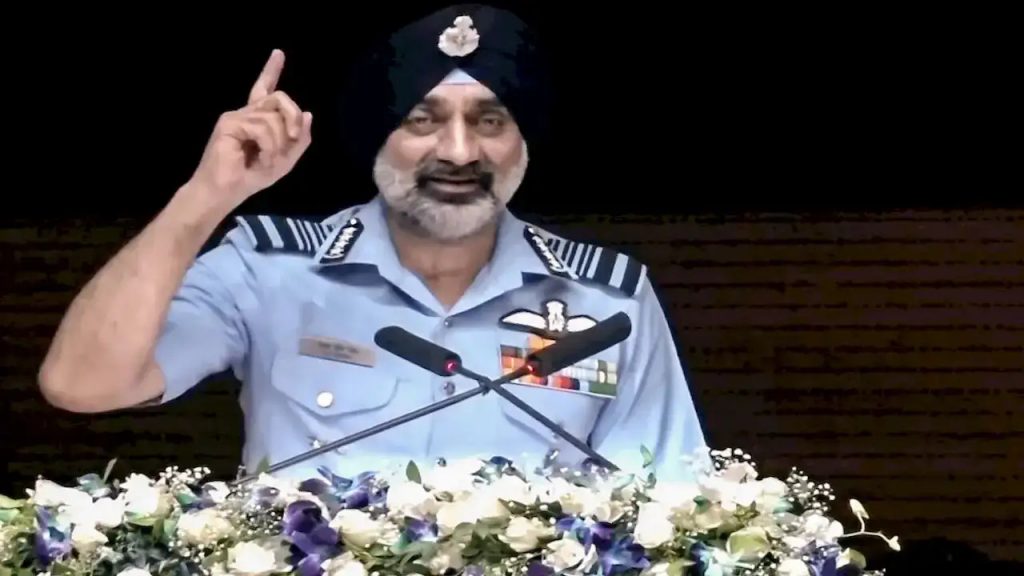NewsGate Press Network
During Operation Sindoor, Indian Air Force has destroyed six aircrafts of Pakistan including five fighter jets and one early warning radar plane.
This was stated by the Chief of Air Staff, Air Chief Marshal AP Singh in Bengaluru on Saturday the 9th of August 2025 during a function organised by AirForce Association.
What was startling fact that was stated by Air Chief was the range at which missiles took-out Pak Air Force’s AWACS at an range of 300 kms – the longest recorded surface-to-air kill in history.
“This is the largest ever recorded surface-to-air engagement, and it sends a powerful signal about our air defence capabilities,” IAF Chief said.
Air Chief Marshal added that several Pakistani F-16 fighter jets were confirmed to be under maintenance at the time of the strikes, in addition to other aircraft destroyed or damaged on the ground.
“We have at least five fighters confirmed killed. The large aircraft we neutralised was either an electronic intelligence platform or an airborne warning and control system,” he explained.
Singh said these achievements were supported by India’s advanced air defence systems, including the S-400 platform, which played a key role in detecting and neutralising enemy targets at extended ranges.
According to Singh, the targeting of high-value airborne assets, combined with the elimination of multiple fighters, was aimed at crippling the adversary’s operational awareness and reducing its ability to coordinate air operations effectively.
Operation Sindoor was designed to send a clear message that the Indian Air Force can strike deep inside enemy territory at any time, Singh said.
The Air Chief said the mission’s objective was not limited to destroying a single target but aimed to stretch enemy resources and create the impression that terrorists are safe nowhere. “That night, we held nothing back. We decided we would attack at multiple points across the front, forcing them to defend several locations simultaneously. The idea was to give them the feeling — or the indication — that we can hit them wherever we want, whenever we want,” he explained.
Singh said enemy aircraft did come near the borders, and although they often stayed away, there were occasions when they were within operational range. “That gave us opportunities to engage them,” he said, adding that the Indian offensive was planned without restrictions.
Among the key strikes was the attack on the Command and Control Centre at the Noor Khan Air Base. “This was based on specific intelligence. The main planning building, also used at times as a civil terminal, was targeted to disrupt operational planning,” he said.
At Sukkur Airbase, the IAF hit the UAV hangar and a radar site, with before-and-after visuals confirming the damage. At Bulari, an AWACS hangar was destroyed, and clear evidence showed that an aircraft was inside during the strike.
Recalling the strike on Sargodha, Singh said, “We had hard intelligence of an F-16 taking off from there. It was a moment we in the Air Force have dreamt of — and I got my chance just before retirement.”
The Air Chief underlined that each attack during Operation Sindoor was chosen based on precise intelligence, ensuring that critical assets — from radar installations to aircraft hangars — were neutralised, sending a strong signal about India’s offensive reach and readiness.


Comments are closed for this post.